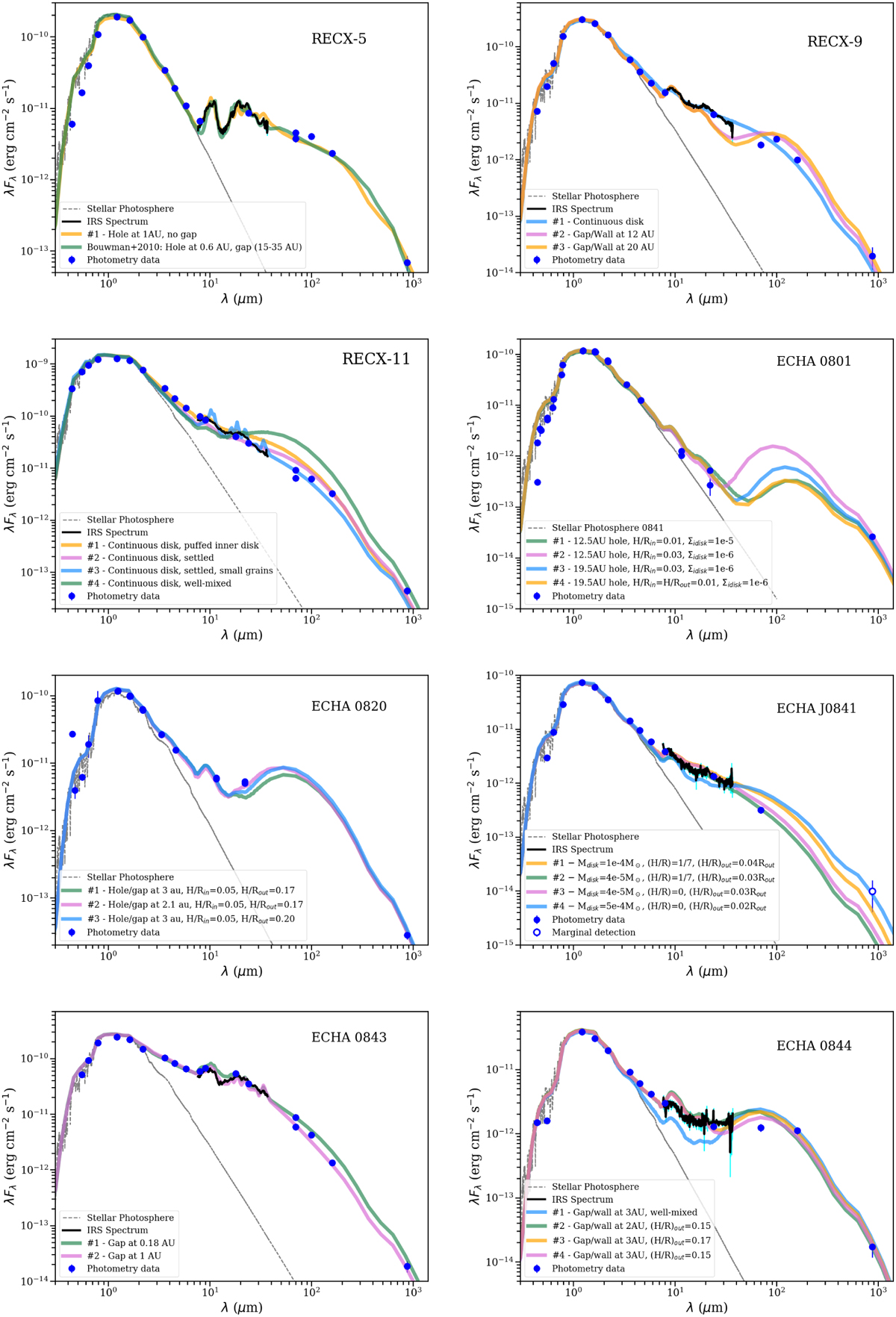Fig. 2

Download original image
SED models for protoplanetary disks. For all cases, the photometry data is indicated by blue circles (empty symbols for marginal detections). The Spitzer/IRS spectra are plotted in black. The MARCS model stellar photospheres are shown as dotted gray lines, and the various disk models are represented by colored lines and labeled according to their main characteristics (see Table 2). RECX-5: a large-scale gap is not needed to reproduce the long wavelengths, which also means that SED alone cannot constrain among many diverse but equally plausible SED structures. RECX-9: a change in vertical scale height at 10–15 au is needed, which could be caused by a gap, wall, warp, or any other structure affecting the density and the scale height probably created by the existing companion at 20 au. RECX-11: best fit with relatively massive and flattened disks. A more puffed innermost disk (either a puffed-up rim or a more extended ~0.6 au region) is required, with the disk becoming increasingly flattened and settled at larger radii. J0801 and J0820 appear to be examples of relatively massive transition disks with large, strongly mass-depleted inner holes. ECHA J0841: very flattened SED. ECHA J0843: small gap or hole required. For ECHA J0844: gap and/or change in the vertical scale height needed to explain the far-IR flux.
Current usage metrics show cumulative count of Article Views (full-text article views including HTML views, PDF and ePub downloads, according to the available data) and Abstracts Views on Vision4Press platform.
Data correspond to usage on the plateform after 2015. The current usage metrics is available 48-96 hours after online publication and is updated daily on week days.
Initial download of the metrics may take a while.


